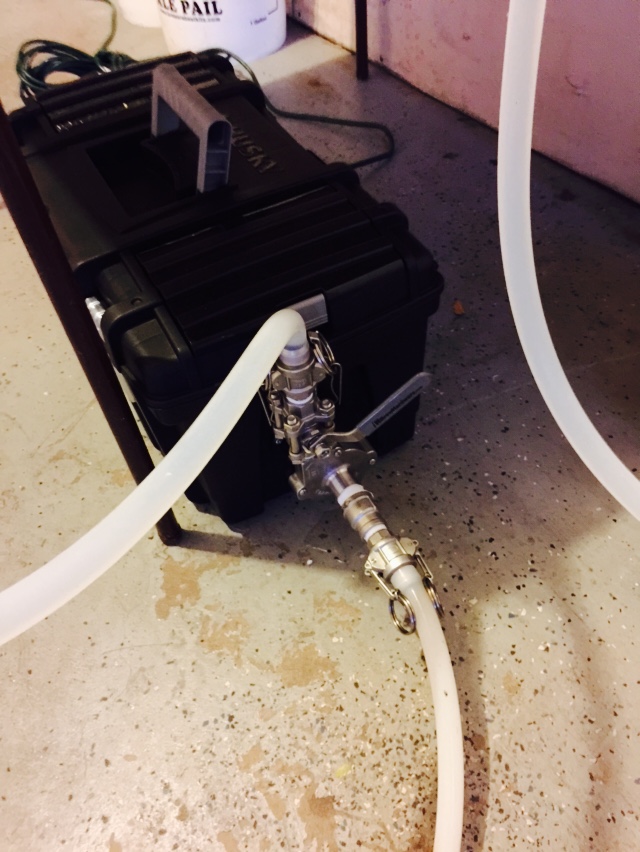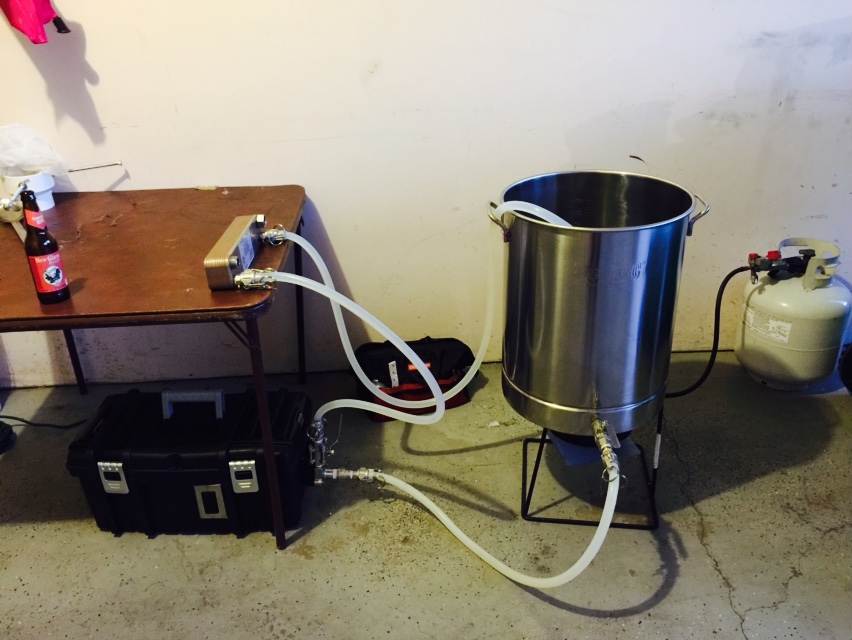So I finally decided to add a brew pump to my brewing setup. I got this primarily to move wort through the plate chiller without having to lift 5 gallons of boiling wort to a higher elevation, as well as to get a good flush of the chiller, but I see lots of uses for this thing in the future.
I bought a Chugger pump with a center inlet and mounted it into a toolbox:

And this is the approximate setup:

So I did a test run tonight and I was very underwhelmed with the performance. I had a couple of issues:
1. If the ball valve on the outlet of the pump head is open any farther than in the picture above, the pump seems to lose prime and it's game over. It does take some fidgeting with the valve and turning the pump on and off to get it to start pumping.
2. The pump gets hot, and after it's ran for a bit sometimes it won't turn back on and start pumping. There was a time or two I turned it on and I'd hear the motor hum but no rotation. If I'd turn it off and on again it would usually come right back to action. I don't have a whole lot of experience with these pumps, but I think it's a little louder than I expect it to be.
I was able to get it going and cycle through some hot PBW through my chiller, and then do a rinse cycle, however I'd say the pump ran for 15-20 minutes and it got pretty hot. I did have the toolbox open for the last part of the pump cycle. I guess the pump is rated at 7GPM max, however I was getting 1-1.5 max out of my setup. I realize the pump has a 3/4" inlet and I'm only feeding it with a 1/2" line, so I probalby won't get 7GPM, but I'm just not sure if it's running right.
I really wanted to get up and brew tomorrow morning, however I'm not fully convinced everything is good with the pump setup.
Any help / advice would be appreciated!!
I bought a Chugger pump with a center inlet and mounted it into a toolbox:

And this is the approximate setup:

So I did a test run tonight and I was very underwhelmed with the performance. I had a couple of issues:
1. If the ball valve on the outlet of the pump head is open any farther than in the picture above, the pump seems to lose prime and it's game over. It does take some fidgeting with the valve and turning the pump on and off to get it to start pumping.
2. The pump gets hot, and after it's ran for a bit sometimes it won't turn back on and start pumping. There was a time or two I turned it on and I'd hear the motor hum but no rotation. If I'd turn it off and on again it would usually come right back to action. I don't have a whole lot of experience with these pumps, but I think it's a little louder than I expect it to be.
I was able to get it going and cycle through some hot PBW through my chiller, and then do a rinse cycle, however I'd say the pump ran for 15-20 minutes and it got pretty hot. I did have the toolbox open for the last part of the pump cycle. I guess the pump is rated at 7GPM max, however I was getting 1-1.5 max out of my setup. I realize the pump has a 3/4" inlet and I'm only feeding it with a 1/2" line, so I probalby won't get 7GPM, but I'm just not sure if it's running right.
I really wanted to get up and brew tomorrow morning, however I'm not fully convinced everything is good with the pump setup.
Any help / advice would be appreciated!!





